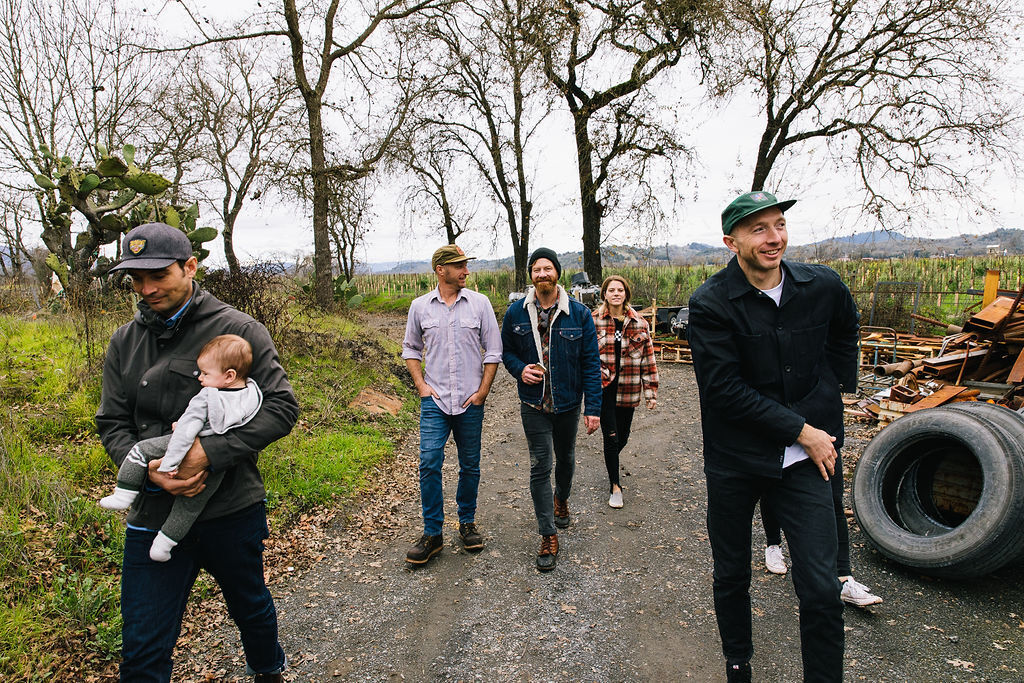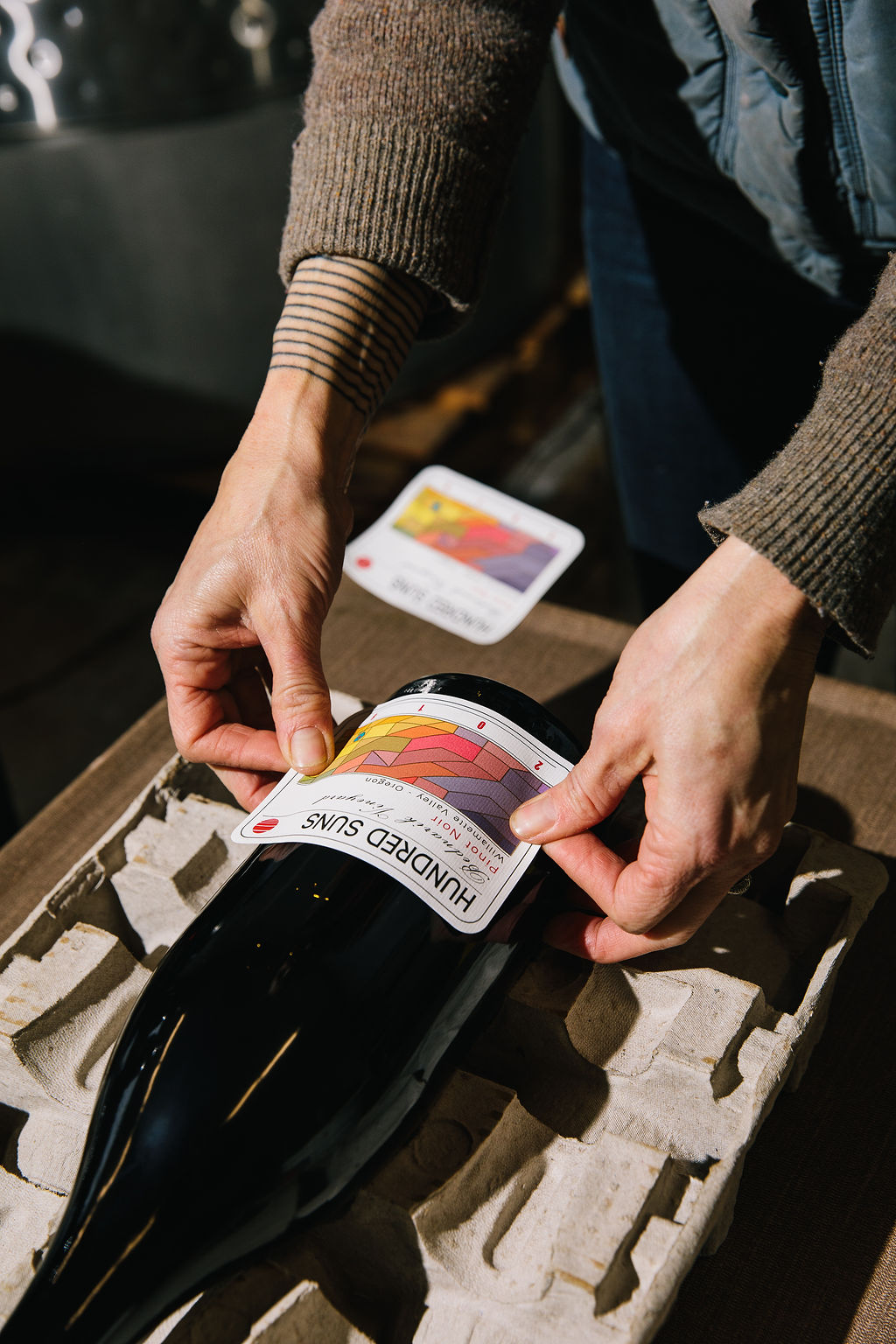The Beautiful Banality of Natural Wine
Natural wine lost its cool? Thank God. How do we leverage its popularity to make large-scale positive change?
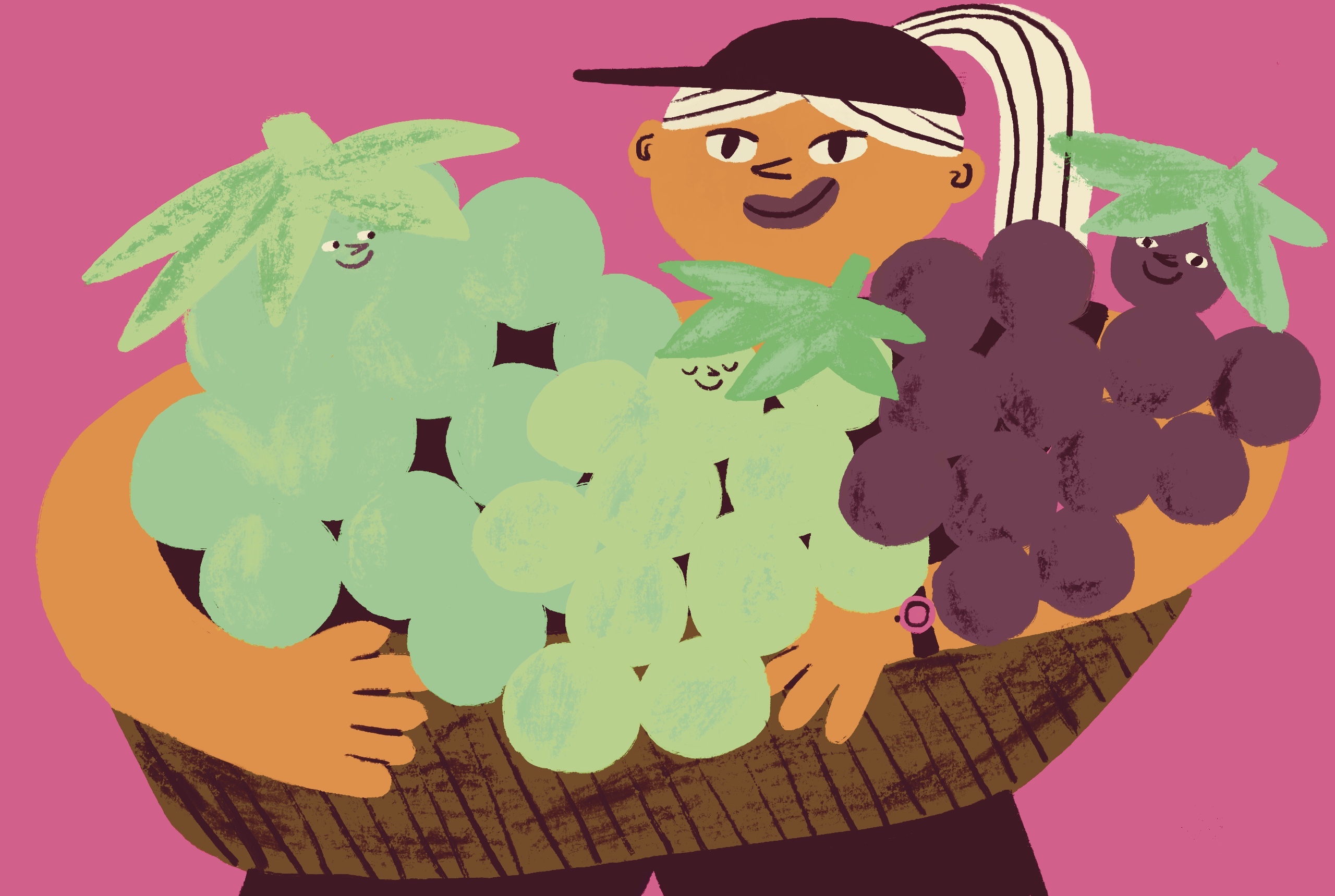
July 14, 2023 — When Taylor Swift released her newest album Midnights, The Atlantic called it beautifully banal — “aggravatingly normal, and, in its way, excellently normal.” And I wonder if the same could be said of natural wine.
This once radical alternative to the conventional wine world is becoming, in a way, normal. Whole Foods sells pét-nat. Natural wine bars and shops are popping up in smaller towns and cities across the nation, from Waco to Boise. As with anything that enters the mainstream, we’re starting to question whether natural wine has lost its cool factor, if it’s dead, if it’s become nothing more than a virtue signal. But does the mainstreaming of natural wine have to be a bad thing?
Taylor Swift may have “burned out on her own hype,” (The Atlantic), but she’s reaching more listeners than ever. And the natural wine movement, banal as it’s becoming, is still doing some really interesting things. If anything, the ubiquity of natural wine feels like proof that the movement has done its job — cracking open an exclusive, gate-kept industry and expanding the pool of people who get to drink, make, buy, sell and talk about wine. I say: if natural wine has lost its cool, thank God. Now, how can we leverage its popularity to make large-scale positive change?
My first glass of natural wine — a 2016 white blend from Languedoc producer Rémi Poujol — was what first introduced me to wine as a product of agriculture. When my server told me that Poujol plowed his vines with a horse, I felt connected to the wine in a way I never had before. All the terminology and tasting notes I’d been taught about wine always felt too esoteric. But now it was about a guy and a horse. Horse shit and soil and microbes. Wine felt tactile for the first time, energetic.
I had what regenerative agriculture pioneer Mimi Casteel (of Hope Well in Oregon) described to me years later as a “transformative experience.”
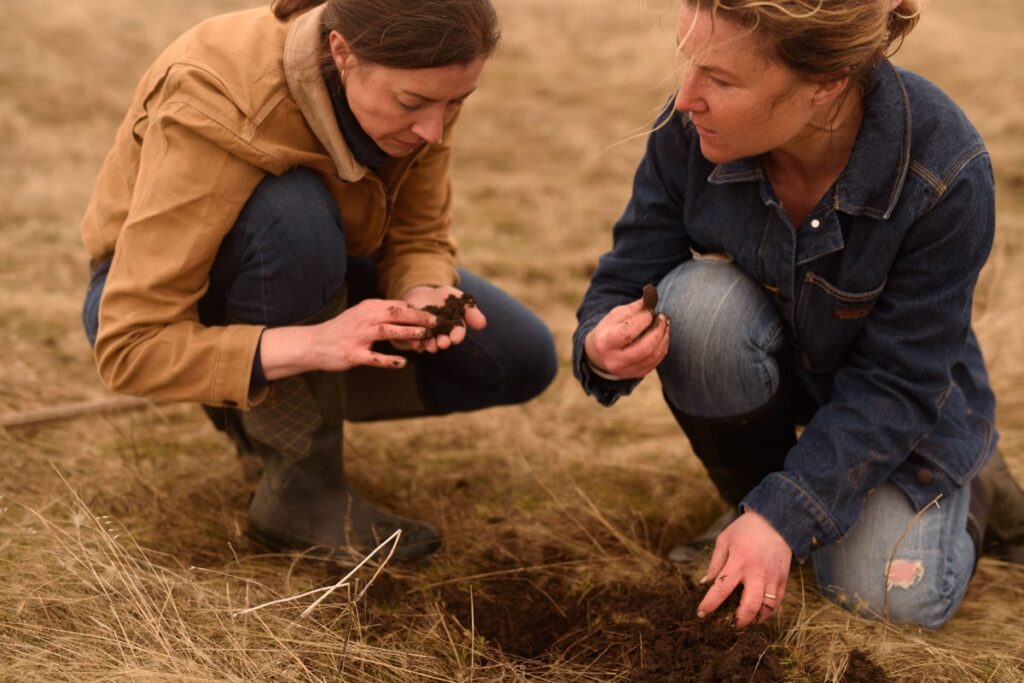
Mimi Casteel (right) with Oregon rancher Cory Carman. (Courtesy of Hope Well)
“Wine connects us to what we’re all doing here. It has an ancient, historical power that provides a platform for people to have a different conversation about their food,” she said. “We don’t have anything else that has that unique power of unlocking all those things at once. I don’t like the preciousness around wine, but when someone has a glass that makes them panic in the best possible way, it’s such a transformative experience.”
That glass of Rémi Poujol made me panic.
Sure, I started using words like “natty” and chasing down all the trendiest bottles on Instagram. But I also started caring about farming and soil and even climate change in entirely new ways. Wine became a medium to connect to something bigger than myself.
According to Gabriela Fontanesi, a 25-year-old traveling wine professional and activist, this makes natural wine “valuable, not cool.”
“When natural wine is cool,” she says, “it falls short of what it could be, and what it could represent. It’s coming from a certain dogma and not fighting for social justice.”
Fontanesi is one of the most inspiring people I know — and, in my opinion, an embodiment of the possibilities that exist within natural wine if we look beyond its trendiness. Having graduated from U.C. Davis and worked with some of the best wineries in the U.S., she keeps a keen eye on social justice, always moving the conversation toward what we can do to make the wine industry a more just and inclusive space.
Fontanesi is constantly advocating for vineyard workers, whom she calls “vineyard stewards” — a term that adds agency and professionalism to a job that rarely gets the credit it deserves. And she makes it a point to challenge the systems at large, drawing connections between the industry’s history and the way it still functions today.
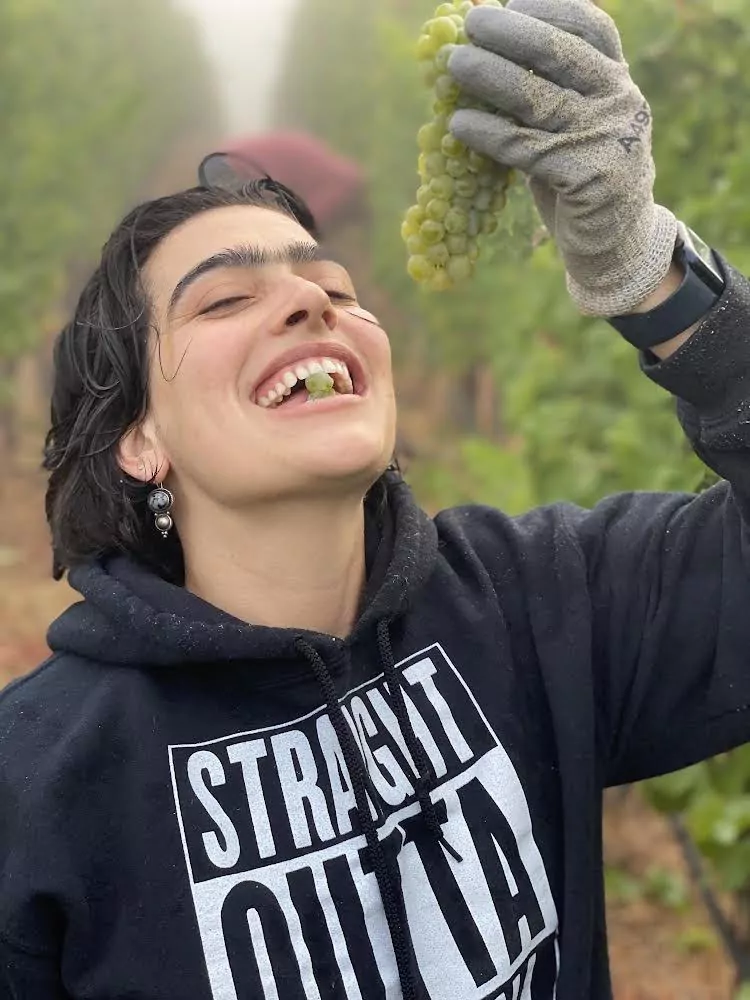
Wine professional and activist Gabriela Fontanesi. (Courtesy of Fontanesi)
In 2022, she spent six months in Mexico learning Spanish and studying for the Wine & Spirit Education Trust (WSET) Level 2 exam with the goal of leading wine tastings for Spanish-speaking colleagues in vineyards back home. Fontanesi is not a fan of the WSET, per se. It relies on Eurocentric language and teaches an imperialist perspective, she says, using tasting terms like “exotic fruit” that are designed for a European audience. But taking it in Spanish meant she could engage a much broader community of people.
When working in vineyards and tasting rooms, Fontanesi saw “how the language barrier in agriculture was used to uphold white supremacy,” keeping Spanish-speaking people in lower positions and preventing them from accessing wine education and tasting experiences. And it exists in wine education, too. During her WSET course, a classmate was penalized for using ‘jamaica’ as a flavor descriptor.
“We are asking not just consumers, but leaders in this industry to assimilate and to objectively define ‘great wine’ — which is incredibly flawed because there is not much objectivity in your memory bank of flavor,” Fontanesi says.
Part of the beauty of wine is its ability to invoke specific, highly personal memories. I remember tasting a Cab Franc that reminded me of the leather boots my mother wore in the 1990s, the smell of crushed elderberries from the tree outside our childhood home. Why can’t “great wine” be any wine that captures and recalls these experiences?
Teaching professionals to seek specific flavor profiles is part of what creates a market for industrial wine, says Fontanesi. It drives producers to adhere to a “recipe,” replicating it each year regardless of what’s happening in the vineyard or winery. That, in turn, encourages intensive farming and labor practices to ensure consistency. And it requires a certain level of privilege to produce, demanding expensive equipment like temperature-controlled cellars for adjusting fermentations regardless of the weather.
The natural wine movement, I’d argue, has helped disrupt this cycle — opening a market that values unique flavor profiles and pushes the boundaries for what “great wine” can be.
But it takes paying attention to more than just obscure grape varietals or sought-after producers. Otherwise, we risk letting natural wine fall into its own bland, commodified trap. The natural wine movement has so far failed to upend wine’s longstanding relationship to privilege. But its privileged nature could be seen as an advantage, Fontanesi argues, if harnessed for good.
“If you look at the history of Cesar Chavez and agricultural reform, it’s often started in vineyards,” she says. “Because those are the workers who are just slightly privileged enough to have the confidence to revolt.”
Vineyards are “ergonomically privileged spaces,” Fontanesi notes. Because vines are trellised, harvesting grapes requires less bending and back-breaking compared to crops like lettuce, garlic and strawberries. And grapes have a high profit margin — especially wine grapes — meaning vineyard workers are paid slightly more compared to other farms.
During the Delano grape strike of 1965-1970 — the first agricultural action of its kind — thousands of Filipino and Mexican farm workers walked off vineyards in Central California, including those owned by E. & J. Gallo Winery (the world’s largest wine brand). Civil rights activist Cesar Chavez helped lead the strikes as part of the United Farm Workers union (UFW), staging a 300-mile march, countrywide boycotts and other efforts that eventually achieved important victories for farmworkers in the U.S., including union contracts, increased wages and better working conditions.
Last summer, the UFW organized a march along that same route from Delano to Sacramento, pressuring California Governor Gavin Newsom to sign Assembly Bill 2183 — a landmark measure that aimed to protect farmworkers’ right to unionize. Newsom signed the bill in late September, a major win for agricultural workers across the state, including those who work California’s 620,000 acres of vines.
Fontanesi would like to see these kinds of actions take center stage in the wine world — especially in places like Napa, where agriculture is uniquely on display and Governor Newsom owns vineyards of his own.
Napa “could be a beacon,” she says. “Marching those roads would have been very visible, and it really would have scared people.”
So what can we do as wine drinkers? The truth is, buying a bottle of natural wine isn’t going to unwind centuries of exploitative labor, even if the winery you're supporting cares about its workers.
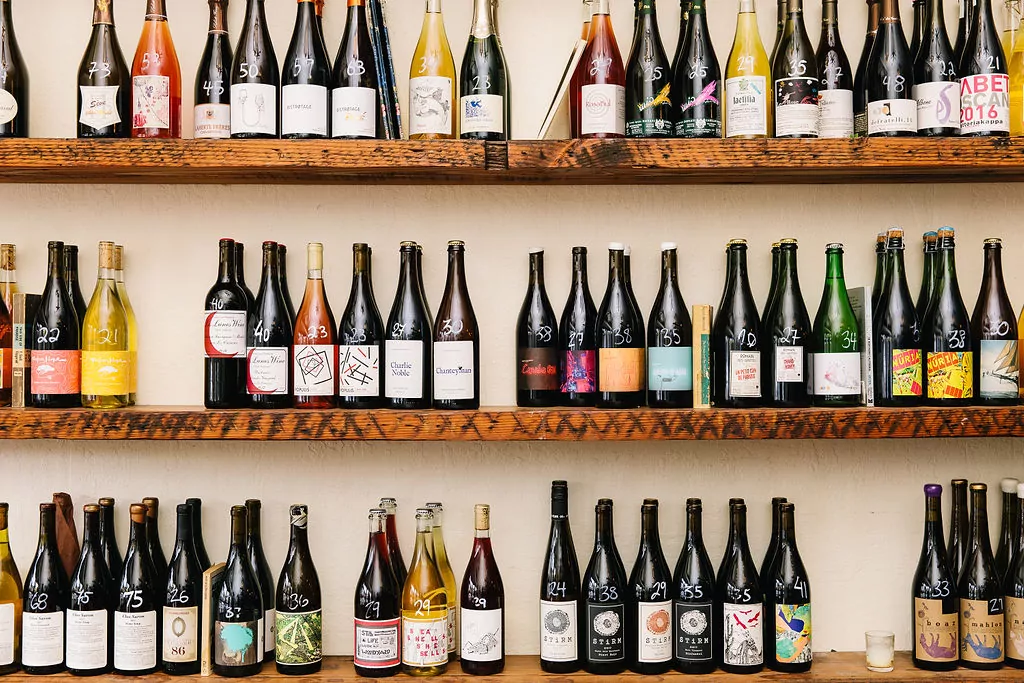
As consumers, we should pay attention to all that affects the product we’re engaging with and fight for justice for those involved.
We should be sharing stories, signing petitions, writing our representatives to encourage positive change as best we can. We should change our language in the way we speak about wine, choosing inclusive terminology and educating ourselves about the real history of wine and the industry’s ongoing practices.
It’s the difference — to paraphrase Elizabeth Cline’s “The Twilight of The Ethical Consumer” (Atmos) — between being an “ethical consumer” and a “consumer activist.”
Consumer activism — “one of the most successful social movements of the 20th century,” according to Cline — involved studying products and the systems behind them with the goal of upending problematic institutions and making sweeping changes through collective action. Ethical consumerism, on the other hand, is centered around private choices, in which consumers choose “better” or more “ethical” brands as a means of quiet protest. Like purchasing pasture-raised beef in lieu of conventional or rinsing and recycling a peanut butter jar. Individual actions that, while beneficial in their own right, often fail to make any lasting change en masse.
The work of a consumer activist is to hold businesses accountable and to fight for better policies as a whole — not just try to incrementally impact the market through everyday purchases. For the natural wine movement to make substantive change, we need to forego the kind of ethical consumerism that’s popular today and emulate the consumer activism of the 1960s and 1970s.
Following Cline’s argument, we shouldn’t pat ourselves on the back for buying “ethical” wine, or convince ourselves that a purchase or two means much in the grand scheme of things. Economically speaking, divesting from big business does absolutely nothing. The loss a large wine company experiences when I choose to buy a responsibly made rosé over a supermarket equivalent is next to nothing. Especially when a lot of us don’t have the economic means to spend $10-$20 more on a bottle, even if we believe in the cause.
Associating morality with purchasing power is inherently problematic. Real change comes from collective action and policy changes — not individual purchases.
Governor Newsom didn’t sign the AB 2183 farmworkers union bill because any of us were quietly opting out of industrially produced wines. He signed it because thousands of Central Valley farm workers risked their jobs to demand it.
Still, where we put our money matters a lot more than where we don’t. And supporting small producers who are doing good things does have an impact on a small scale. Especially if we think about it more as an investment than a one-time purchase. What are we investing in by buying our wine locally from a producer we trust?
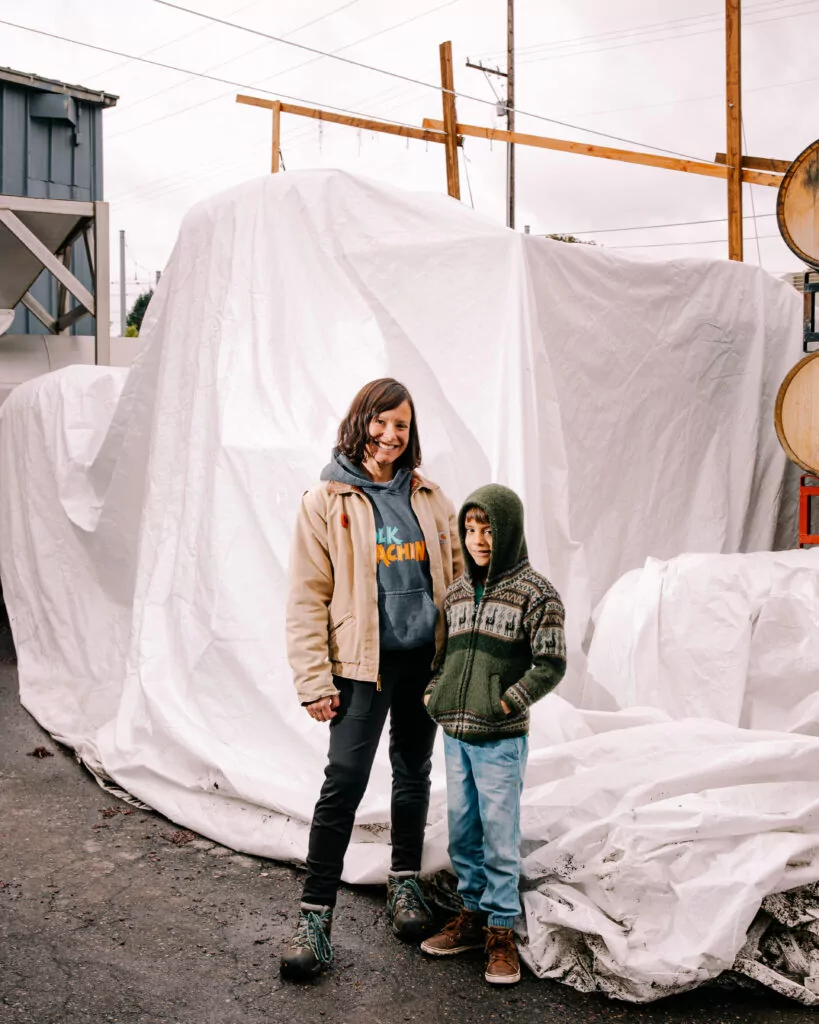
Cristina Gonzales, founder and winemaker at Gonzales Wine Company in Oregon. (Courtesy of Gonzales)
When we spoke for this piece, Fontanesi was working harvest at Gonzales Wine Company in Oregon. Cristina Gonzales, founder and winemaker, is one of few Hispanic-American winemakers to own her own winery. She’s a board member at AHI VOY, an Oregon nonprofit aimed at empowering vineyard stewards through education and professional development. And she’s committed to creating a more inclusive community in the wine world, separating it from the Eurocentric and colonial model that’s long dominated the industry.
“Cristina is actually doing what most people only say they’re doing,” says Fontanesi. “She’s paving a path for people to figure out how to make a sustainable income from wine. People don’t recognize all the privilege inherent in making wine. The industry is not financially viable for most.”
Winemaking requires at least a one- or two-year time period before winemakers receive a return on their investment. The labor and upfront costs of making wine aren’t rewarded until that wine is sold, which can be years after it was made. There’s a certain privilege in having the funds to invest in those costs, which is why most people in the industry have either generational income or second jobs to pull them through. Fontanesi wants this reality to be transparent in the way we’re talking about wine — especially among industry professionals.
This kind of transparency makes room for those with less privilege to voice where they’re coming from, she says, and to help others in the industry succeed. It also gives conscientious wine drinkers more information about who and what they’re supporting.
One of the problems with ethical consumption is that we don’t have all the information we need to make ethical choices. When there’s transparency, we can feel empowered to make choices that feel good to us.
“Things like transparency are part of the root systematic change that allows ethical consumerism to even exist,” says Fontanesi. “We shouldn’t be pushing people to be ethical consumers; we should build systems that allow them to be ethical consumers.”
Megan Bell of Margins in Santa Cruz is, in my opinion, a leader in the kind of transparency that can move the industry forward.
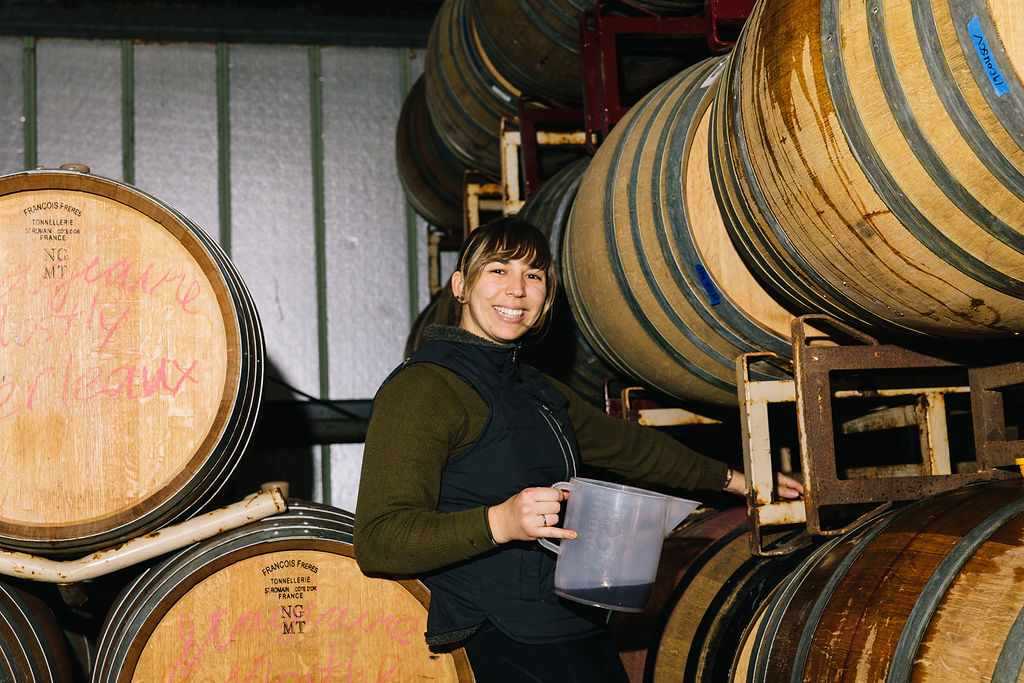
Since founding Margins in 2016, she’s included precise details on her website about the winemaking and viticultural practices (including sulfur use and vineyard treatments) behind each bottle — largely unheard of in conventional, and even most natural, wine spaces. If one of her vineyard partners has to spray Movento one year to save their crop, she says so.
By freely sharing this information, she’s letting individuals make their own choices about whether they want to drink a particular wine. And she’s helping us understand on a deeper level what it’s really like to grow fruit and make wine. Wine is a volatile, ever-changing product, and adhering to strict dogma can be problematic.
Even viticulturalists who are practicing organic may have to take drastic measures to save their fruit, especially with the uncertain weather we face today.
One of Bell’s goals when starting out was to incentivize vineyard managers to convert to organics by acting as a guaranteed buyer for their grapes. And the gaining popularity of natural wine arguably helped her reach this goal. Her sales nearly tripled between 2019 and 2022; and by 2021, all of the vineyards she worked with had fully converted.
“They would not be organic if I were not working with them,” Bell says — and that’s a very good thing. “But I do like to be realistic about where things are at. Vineyards in general are not in a good state right now.”
2022 brought another winter of drought followed by a period of very rough weather and an unseasonably warm spring, pushing the grapes to bloom more than five weeks earlier than the year before. Yields were down by more than 60%.
“A healthy, thriving vineyard is still going to suffer in 115-degree heat, but at least the farming is organic now. I have to keep coming back to that,” Bell says. The incremental changes she made are still making a difference, even in a world that’s tumbling toward doom.
On top of supporting vineyards, Bell is working to build a more sustainable economic path for young people in wine. She pays her harvest interns, even those with little or no experience, $25 per hour — “the top wage I ever made with four years’ experience and a degree from U.C. Davis,” she says. “Could I hire someone for less? Of course. But I care about making real change. Some winemakers do that in other ways — like maybe they can’t infiltrate the labor practices of a corrupt company [such as third-party contractors], but that person might be doing other cool things. The silver lining, if you will, is that it’s all a work in progress. People haven’t given up.”
These nuances can easily get lost amidst the rising popularity of natural wine, especially when the trend factor means big brands are jumping on the train purely for the marketing value. But they can be some of the most interesting and nourishing parts of drinking wine. When I saw a bottle of Margins at a shop in Oregon recently, I felt proud to see it, proud to know her. Supporting people feels good. Having these conversations and digging deeper feels fruitful and exciting.
The natural wine movement, and the small producers within it, aren’t exempt from extractive systems. But I still believe — and I’ll die on this hill — that natural wine is important. And that, if we pay close attention, if we engage and ask questions, if we invite people in, if we let the wines we are drinking propel us to other places, we can use it to move the needle in the right direction. Even an inch.
Katy Severson is a writer and chef who covers natural wine, sustainable agriculture. regenerative foodways and climate change.



 Shop by Values
Shop by Values
